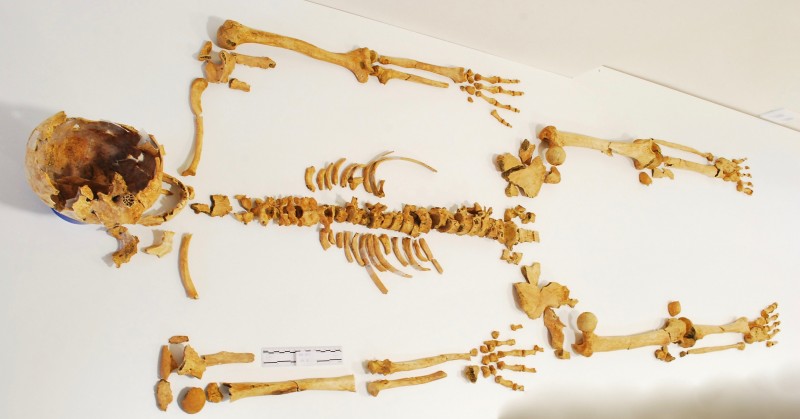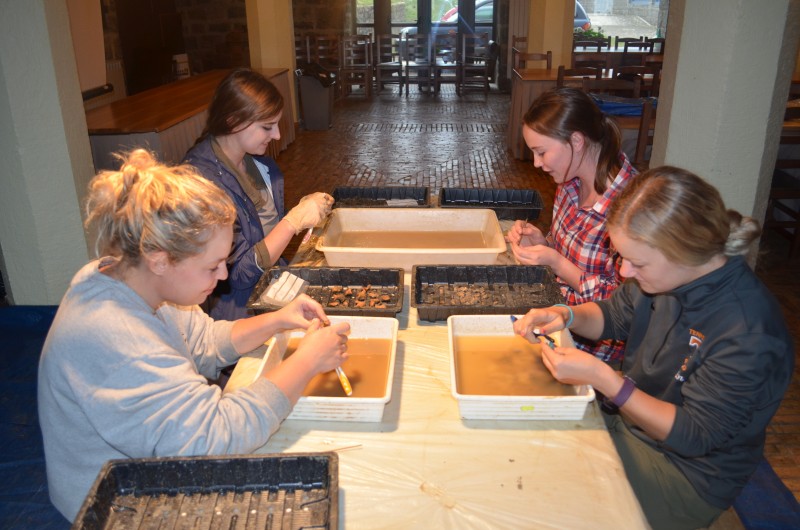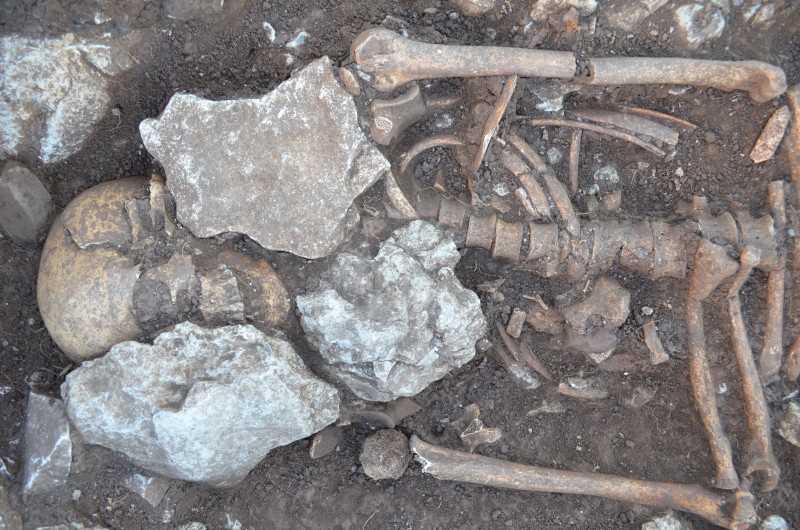Fieldwork
This listing expired on September 1, 2018. Please contact fieldschool@aditu.info for any updated information.



Location: Uharte-Arakil, NV, ES
Season: July 1, 2018 to August 31, 2018
Session Dates: Session 1: July 3-27, 2018 Session 2: July 31 - August 24, 2018
Application Deadline: May 31, 2018
Deadline Type: Rolling
Website: https://aditufieldschool.wordpress.com/aditu-osteology-summer-school/
Discount for AIA members: No
Program Type:
Field school
RPA Certified:
no
Affiliation:
Aditu Arkeologia
Project Director:
Emma Bonthorne
Project Description:
The Aditu Osteology Summer School is a research project investigating human burials at the medieval Sanctuary of San Miguel in Excelsis, at the top of Aralar mountain in Navarre (Spain). The 2018 season will focus on the on-site analysis of the remains recovered from the medieval cemeteries of San Miguel de Aralar and Zamartze. Limited excavation will take place at the site to expose more architectural structures, while the Summer School will concentrate on post-excavation work in the field laboratories directly on the human remains recovered from the site.
This research is part of a regional study that started with the associated monastic complex of Santa María de Zamartze in the municipality of Uharte-Arakil and extended into the nearby Sanctuary of San Miguel In Excelsis (both in Navarre, Spain). The main element in Santa María de Zamartze is a 12th century AD Romanesque church built on top of an earlier Roman mansio. Restoration works to the complex in 2005 revealed medieval graves and Roman structures. San Miguel de Aralar includes a church from the 9th century AD and a series of structures from even earlier periods.
The primary goal of the project is to gain knowledge of the population of this part of Navarre during the medieval period. Graves are thought to date between the 9th and the 14th centuries. In the last years, over 180 individual burials have been uncovered from Santa María de Zamartze and San Miguel de Aralar. The project will use the individuals recovered from these cemeteries to perform a thorough study of the diet, health, and bioprofile (age, sex, stature) that could be extrapolated to the region, as little is known in the area about its medieval population. Additional details of funerary practices may also be gained from the position of the skeletons, burial orientation, and grave goods.
The Aditu Osteology Summer School is aimed at anyone that wishes to learn about human osteology, bioprofile methodology, paleopathology, and chemical analysis of human remains, as well as the overall setup and management of archaeological excavations. The course is suitable for those with experience handling human remains and those who have no prior knowledge in the field of osteology. The course includes lectures on specific topics related to the analysis of human remains and more general topics such as funerary practices in medieval Navarre and Basque archaeology. Students will spend an average of 7-8 hours per day working on post-excavation procedures for handling human remains, including cleaning, reconstruction, analysis, and documentation. Throughout the course, students will become proficient in carrying out all aspects of osteological analysis, including the determination of age, sex, stature, identification of pathological conditions and trauma, and calculation of minimum number of individuals in cases of disarticulated remains.
The summer school will be run concurrently with the Aditu Medieval Archaeology Field School, giving students participating in the in the Osteology Summer School the opportunity to excavate the medieval structures being investigated at San Miguel in 2018 during the dates of their course. Arrangements to participate in the excavation can be made at the site according to the discretion of the directors, time availability, and the participant’s disposition.
Period(s) of Occupation: Medieval (9th-14th centuries AD)
Notes:
The Aditu Osteology Summer School is designed to provide students with practical experience in the processing and analysis of human remains from a medieval cemetery context, including cleaning and reconstructing remains, basic human osteology, bioprofiling methodology, and analysis of pathological conditions and trauma. The school provides students with the opportunity to live and work in a unique setting: the historically significant sanctuary of San Miguel in Excelsis on the mountain of Aralar.
Project Size: 1-24 participants
Minimum Length of Stay for Volunteers: One full session
Minimum Age: 18
Experience Required: Some osteological knowledge is preferred, but is not a requirement for participation.
Room and Board Arrangements:
Board and accommodation will be provided in the Sanctuary. All necessary facilities are provided. Cost: 1750 Euros
The AIA is North America's largest and oldest nonprofit organization dedicated to archaeology. The Institute advances awareness, education, fieldwork, preservation, publication, and research of archaeological sites and cultural heritage throughout the world. Your contribution makes a difference.
Notifications